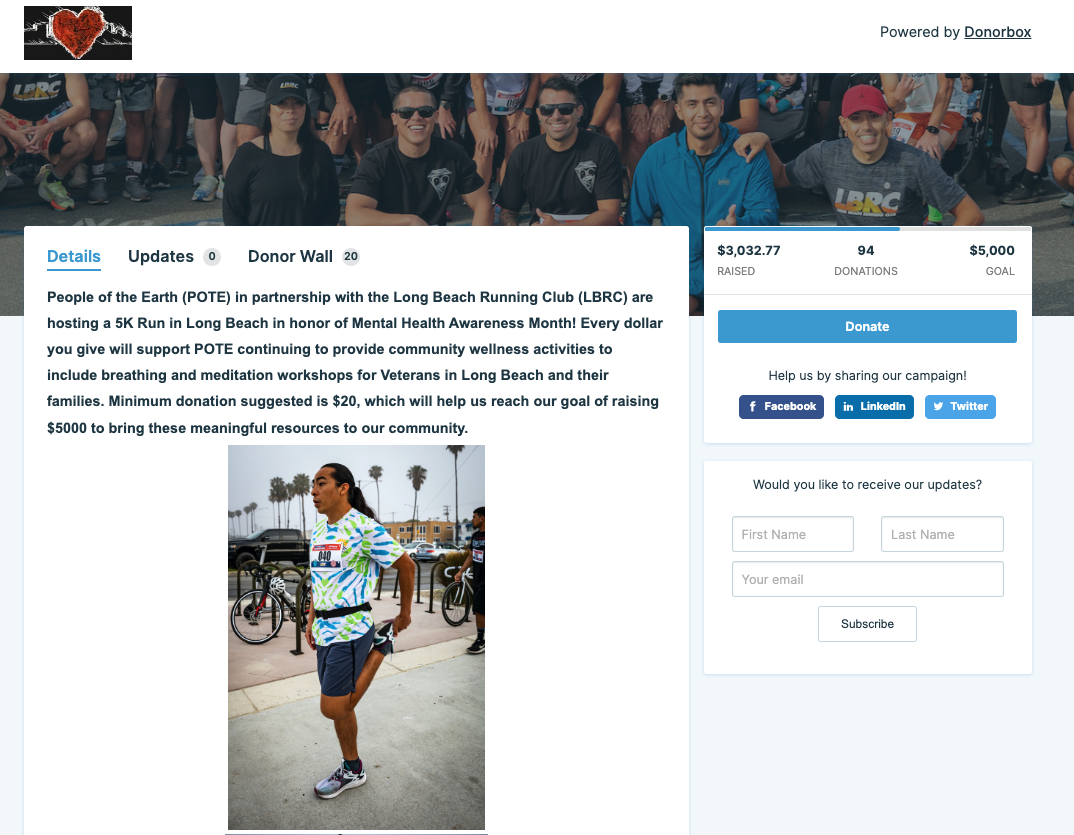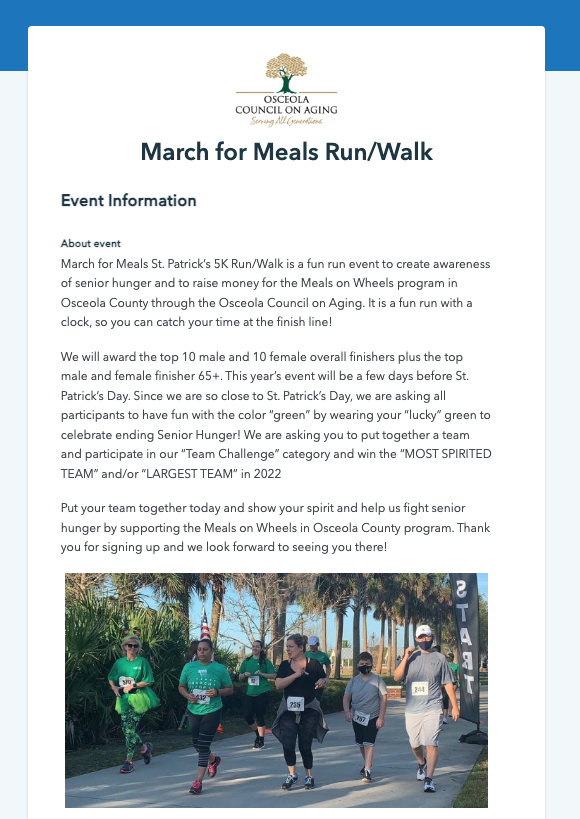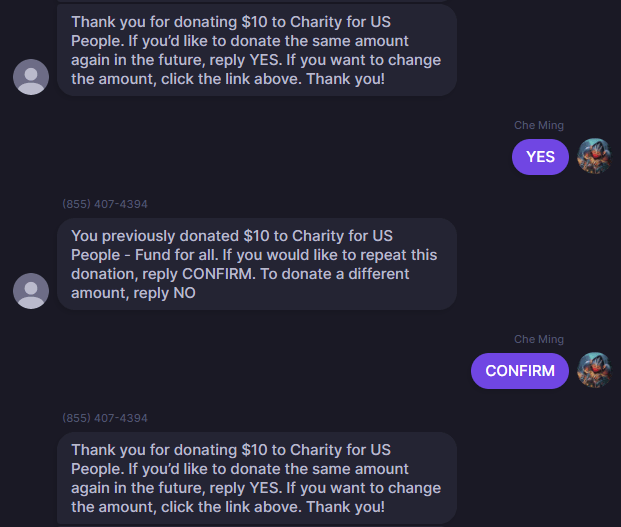How to Organize a 5K Fundraiser or Charity Run: Step-By-Step
Ready to get moving for your cause? Learn the steps to organizing a charity run to bring in more funds for your mission.

Ready to get moving for your cause? Learn the steps to organizing a charity run to bring in more funds for your mission.

A charity run is a great way to attract donations and raise the profile of your nonprofit organization, but it can be a challenge to plan. From the logistics to getting the word out, a 5K fundraiser takes a lot of preparation and work to make it a success.
Don’t let this deter you from hosting a charity run! These fun events inspire generosity to raise more funds and boost your organization’s brand. In this article, we’ll walk you through the eight steps you need to host an energizing 5K fundraiser or charity run.
If you want to learn how to host a virtual 5K fundraiser, check out this blog!
Start off by pinning down your location. Your route choice can have a big impact on the rest of your charity run plan. For example, if you want to host it on a major city street, you’ll need permits and support from the city. Your route may also affect the range of participants, so planning a smart location can boost your attendance.
Ideally, you also want the route to be accessible for crowd support. If possible, try to mobilize the local community to support the charity runners on the day. Vocal support can make a huge difference when participants are feeling the burn! And be sure to put your finish line somewhere accessible so everyone can celebrate together.
Don’t forget about safety concerns. Is there usually much traffic on your chosen route? Are there plenty of sidewalks that runners can use to avoid traffic? Can you easily place things like water stations, portable toilets, and trash cans on the route? The positioning of water stations can also affect the route and the well-being of your charity runners. Place these at regular intervals so everyone stays hydrated.
Pro tip: Before you confirm a potential location, get a volunteer or staff member to walk around the route. This will highlight any details that you can’t see when choosing which path to take. Is there anything that might deter some people from signing up, for example?
Now that you’ve got your route sorted, think about the resources you’ll need.
This can include:
Pro tip: You’ll need a fundraising platform that can help you sell tickets, use peer-to-peer fundraising, and collect donations during your charity run.
Donorbox has all these tools and more to make hosting your charity run or 5K charity run easy! Learn more about our features here. Check out how POTE used Donorbox crowdfunding to raise over $3,000 for their 5K fundraiser!

Setting fundraising goals for your charity runs helps with planning and organizing. Look to create SMART fundraising goals.
Not already familiar with these? SMART goals are Specific, Measurable, Attainable/Achievable, Relevant, and Timely.
An example of a SMART goal you might set?
Pro-tip: Make sure that your financial goals are realistic, especially if you’ve done a charity run before. If you didn’t raise a lot last time and don’t have many more resources at your disposal, you can still push that goal up. Just not to the point that you’re likely to fail!
The best way to collect registration fees for your charity run is by using a streamlined ticketing tool built for nonprofits. Donorbox Events offers tons of features for nonprofits, including:
And more!
Your Events page should have all the information your participants need to know, including location, time, and any other activities. We love how this organization shared tons of information about its mission and the event itself!

Time to start spreading the word about your charity run! You can share the link to your Events page on social media, through email, and with a QR code for in-person access. A free QR code is automatically generated with every Donorbox Events page, so this step is easy!
Another great way to share your charity run is through peer-to-peer fundraising. Your participants may want to fundraise on your behalf to raise more for your cause and cover their own admission fees.
Donorbox Peer-to-Peer makes it super easy to allow your supporters to fundraise on your behalf. Simply enable peer-to-peer on your campaign and either allow anyone to sign up or register your fundraisers via email. Either way, they’ll receive an email with a link to their fundraising page that they can edit and make their own. Any donations they receive will automatically flow to your account, so you don’t have to worry about collecting funds!
Learn more about how peer-to-peer works in this step-by-step guide.
Pro tip: Promoting your event as a run or walk can open it up to a wider range of abilities. Not everyone will feel confident enough to get involved in a run but they may participate if they can walk too! Having a fun activity like a costume contest will draw more participation too.
You’ve planned out all the logistics of your event, from route to refreshments to add-on activities. Now comes the important part: raising money for your cause. That’s what a charity run is all about, after all!
Here are three tools you can use to raise more money during your 5K fundraiser:
A donation kiosk is a great way to collect donations without worrying about cash. Usually, a donation kiosk will be a stationary fixture where your attendees – both runners and their supporters – can quickly make a donation.
The Donorbox Live™ Kiosk app turns your tablet and card reader into a donation kiosk that collects donations via card, smartphone, or smartwatch. It’s entirely portable, so you can leave it as a stationary kiosk or have staff and volunteers accepting donations as they work their way through the crowd.
A donation kiosk eliminates the need for cash – which most people don’t carry anymore, anyway. It’s also a safer and more organized way to track funds raised during your event.
Another great way to collect in-person donations is to use a tool everyone is bound to have in their pockets: their smartphone!
Donorbox Text-to-Give is easy to enable and allows you to quickly connect donors with your online donation form. All they have to do is text your campaign ID or custom keyword to the text-to-give number or shortcode (depending on which plan you choose). They’ll then receive a link to your donation form, where they can quickly complete their donation using their preferred digital wallet.
This is a great way to get a crowd of people to donate! They can also repeat their donation again via text. Here’s how it looks for your donors:

As we mentioned above, a free QR code is automatically generated for every Donorbox campaign or Events page. This means you already have everything you need to collect more donations during your event!
Access your QR code by finding the campaign you wish to share on your Donorbox account. You can edit the QR code’s link, if you choose, and then download as an SVG or PNG file. Post this around your event to quickly connect people with your donation form and inspire more giving!
Learn more about how to use QR codes in this blog.
Congratulations, you organized your charity run and everything went as planned! Now it’s time to get those congratulations and thank-you messages out to everyone who got involved. This can be in a thank you email, card, or letter.
As well as participants and donors, send a thank you email to the volunteers who made the day run smoothly.
It’s also time to add any new donors or participants to your donor stewardship plan. Donorbox donor management makes it easy to add offline supporters to your supporter database. Plus, any registrations or donations that come through your Donorbox Events page or online donation form will automatically be logged to any existing or new supporter profile, making it easy to track your donors and build a lasting relationship.
Surveying your participants is a great way to get some feedback on your event and prepare for next year. Check out these 12 post-event survey questions to ask attendees for some inspiration.
Pro tip: It’s not too soon to start next year’s charity run plan! Participants are likely to be on a big high soon after they’ve completed the run. Take advantage of this and offer them a discount if they register for next year’s event.
Breaking down your charity run plan into smaller tasks can make it much easier to get organized. With good planning and strong promotion, your nonprofit can organize a charity run that attracts plenty of participants. And that means more funds for your organization!
An effective fundraising platform is essential for this, not least because it takes the stress out of attracting donations. It also helps you to reach a wider pool of potential donors who will support your event.
Donorbox has a robust suite of tools and features to help you tackle fundraising at your next charity run or 5K fundraiser. With event ticketing, donation forms that streamline the giving process, tons of on-site and in-person giving options, and more, Donorbox can ensure you don’t miss out on any donations to support your work.
For more tips on fundraising and promoting your nonprofit, take a look at our Nonprofit Blog. Subscribe to our newsletter for fundraising know-how delivered to your inbox every month.

Subscribe to our e-newsletter to receive the latest blogs, news, and more in your inbox.

